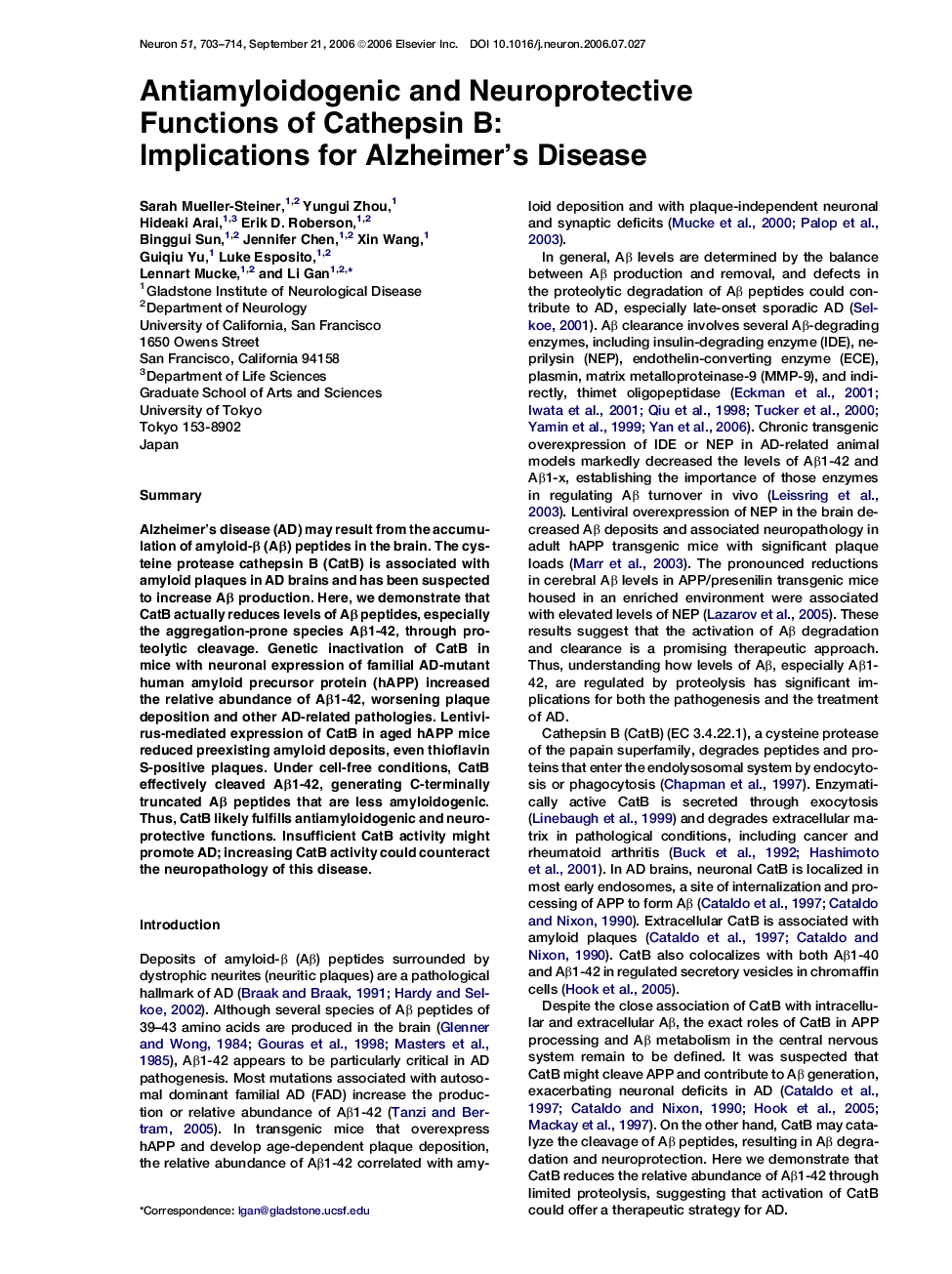| Article ID | Journal | Published Year | Pages | File Type |
|---|---|---|---|---|
| 4323111 | Neuron | 2006 | 12 Pages |
SummaryAlzheimer's disease (AD) may result from the accumulation of amyloid-β (Aβ) peptides in the brain. The cysteine protease cathepsin B (CatB) is associated with amyloid plaques in AD brains and has been suspected to increase Aβ production. Here, we demonstrate that CatB actually reduces levels of Aβ peptides, especially the aggregation-prone species Aβ1-42, through proteolytic cleavage. Genetic inactivation of CatB in mice with neuronal expression of familial AD-mutant human amyloid precursor protein (hAPP) increased the relative abundance of Aβ1-42, worsening plaque deposition and other AD-related pathologies. Lentivirus-mediated expression of CatB in aged hAPP mice reduced preexisting amyloid deposits, even thioflavin S-positive plaques. Under cell-free conditions, CatB effectively cleaved Aβ1-42, generating C-terminally truncated Aβ peptides that are less amyloidogenic. Thus, CatB likely fulfills antiamyloidogenic and neuroprotective functions. Insufficient CatB activity might promote AD; increasing CatB activity could counteract the neuropathology of this disease.
